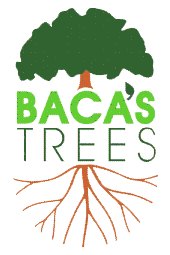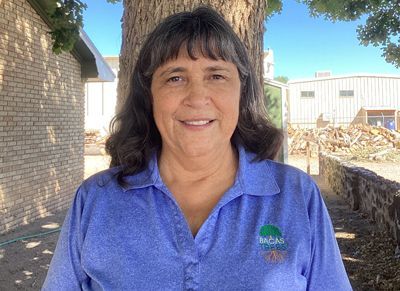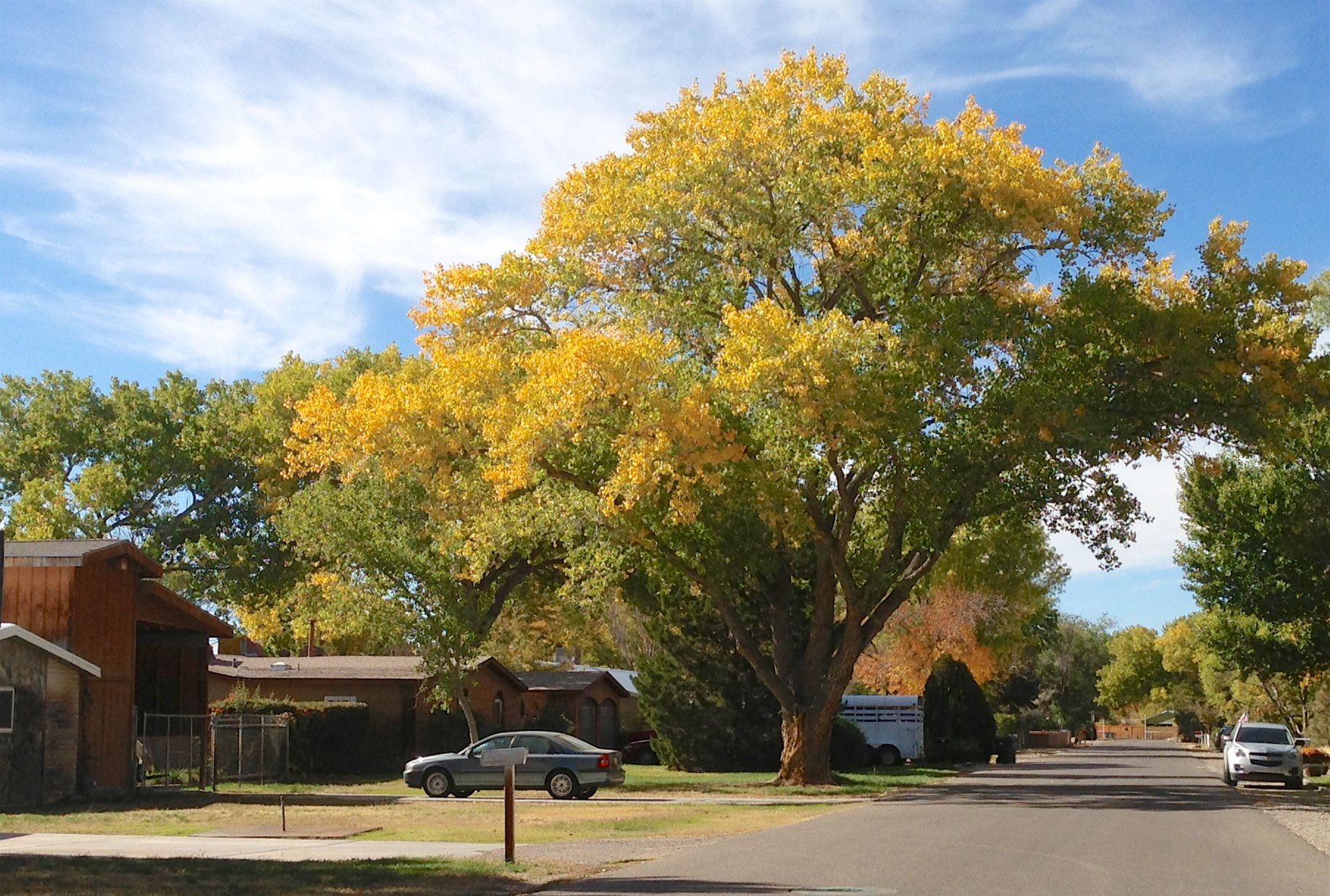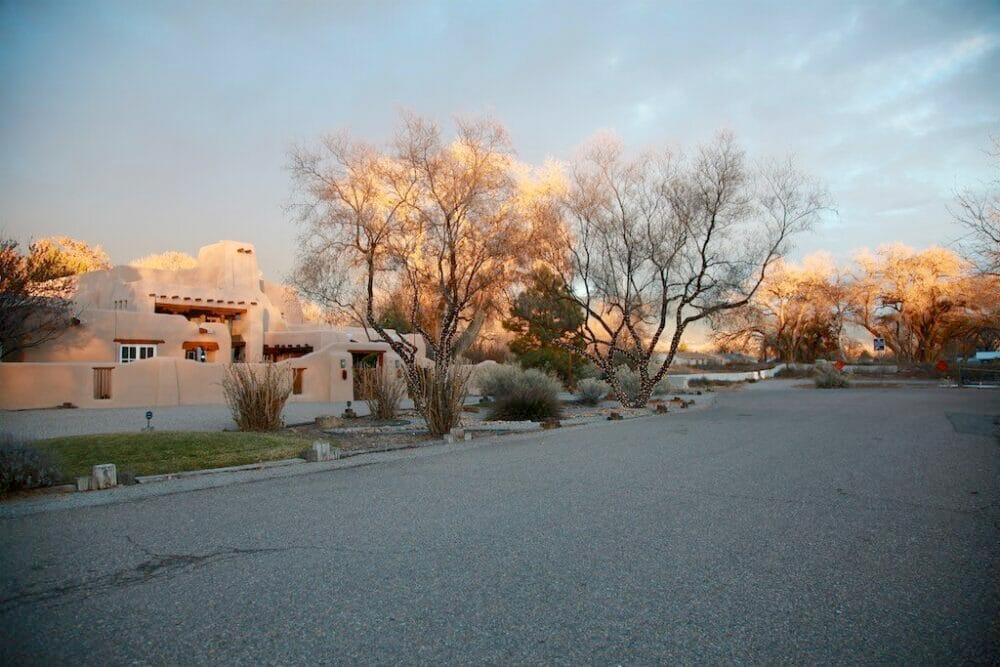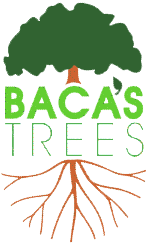Tree Diagnostics in Albuquerque, NM and the Surrounding Areas
Camille is an ISA Certified Arborist. Her focus is on keeping trees and the environment healthy.
She writes a monthly newsletter with lighthearted tips to help you maintain your landscape. She loves visiting with people at their homes to get a good look at general issues that may affect your trees and shrubs. Camille calls herself the Arobrista because she is a Certified Arborist AND she makes the coffee in the morning.
- Tree Pruning
- Tree Trimming
- Crown & Canopy Thinning
- Crown Lifting
- Deadwood Removal
- Tree Reduction
- Deadheading
- Fall Pruning
When your tree is ailing, identification of the problem is critical to protect the tree and the environment. There are 3 general things that can cause issues: 1) Infestation, 2) Disease, and 3) Environmental Issues. Once an issue has been identified, we have a team of people who are certified to apply chemical control.
Infestations
This is the presence of bugs that may be eating your tree. JUST BECAUSE YOU SEE BUGS DOES NOT MEAN THEY ARE HURTING YOUR TREE. About 95% of the bugs on your tree are not hurting it, they just need someplace to live. Killing the bug is not always the answer. In fact, sometimes killing the bug can disturb the ecosystem in a way that is more harmful to the tree. Identifying the bug and the damage it causes is critical at which point a plan can be put in place to correct the issue. Sometimes this is done with chemical but this is not always the case. Call the Arborista.
Disease
This is referring to bacterial or fungal disease. We do not recommend internet diagnostics. Diseases in Texas or Minnesota or whatever state the articles were written are very different than diseases in New Mexico. In fact, we see disease so rarely that we usually confirm our opinion with lab tests through NMSU Extension Office. If we confirm that your tree has a treatable disease, we have the personnel and the tools to treat. Call the Arborista.
Environment
This is everything else and where we see most of our tree issues. Too much sun. Not enough sun. Too much water. Not enough water. Chemical is used for weed control causing harm to the trees. Plumbers use root killer to clear drains. Stucco debris has lime that trees do not like. It could be anything. Call the Arborista.
When you call Camille for a consultation, she will coach you on better tree care. If necessary, she will suggest treatment for corrective action or help you with preventative care. Camille also helps with tree selection, the right tree for the right place.
Most home visits are simply consultations for advice. There is not often a need for treatment. For current customers, this service is free. For new customers, the consultation is $35 for a 15-minute consultation in Albuquerque.
Fruit Tree Freeze
Protecting fruit tree tissue from freeze damage
Although fruit trees grown in New Mexico are winter hardy, the buds, young shoots, and trunks can suffer freeze damage. Our days are so warm and our nights are very cold. The drastic change in temperature can do damage to these sensitive tissues.
Winter scald, which damages the trunk and limbs, usually develops on the south or southwest portion of the tree killing the bark. You can wrap the trunk beginning in November to protect from freeze damage using burlap, tree wrap, cheese cloth, white construction paper, aluminum foil, etc. These have to be removed in early spring; otherwise you will just create a hotel of sorts for bugs that can damage the tree.
White latex paint has also been used to protect fruit trees from sunscald. Mix this at ½ paint and ½ water. Do not use oil based paint as this can injure the tree. This should be done in late fall and should not be done when temperatures are below 50 degrees.
Protecting young fruit buds from freeze damage
There really is no sure-fire way to protect your fruit buds from freeze damage. However, there are a few old wives tales that may help. Since I’m an old wife, I can share them with you. Once the tree has bloomed you can:
- String old fashioned Christmas lights on your trees. Turn them on at night when the forecast is freeze.
- Put a flood lamp at the bottom of the tree aiming the light upwards toward the tree.
- Cover smaller trees with a tarp.
- Water your trees really well the day before a forecasted freeze. The water absorbs the heat of the day and dissipates it at night and keeps the tree warmer.
Using these methods before bloom will shock your tree and cause it to bloom prematurely.
Since we are on the subject of old wives tales for fruit trees, you can protect stone fruit trees from a stone fruit borer by planting a bed of garlic, chive, or onion at the base of the tree right at the base. This bug does not like smelly stuff.
Scale
This tiny, little, moisture-sucking bug makes its host ugly and can eventually kill it. It has many looks and many different hosts. This bug moves with the wind and is very persistent. I have listed a few types here but there are many more.
Pinon needle scale presents itself as tiny black bugs on the needles. A single needle can have more than 15 or 20 bugs on it. You can tell you have the bug when the needles start to brown from the inside towards the tip. Once this bug attaches itself to the needle, the needle will most likely die. Enough of these bugs and your tree will look thin and sickly. To treat for this bug, we use dormant oil, usually in late February or early March, depending on weather and bug activity. To defend against this bug, hose the trunk off with a hard spray, especially in the crotches and on the undergrowth of the tree where the rain doesn’t hit it. **
Euonymus (and Boxwood) scale presents itself as white specs like dandruff. With a really sick shrub, you will find heavy populations on the leaves, twigs and limbs. Treatment and Defense - Hosing this off can be a little harder but dormant oil works well in February, March or April. This bug also responds well to chemical treatment if necessary and we would not do that until after May or later. **
Sycamore scale presents itself as tiny little dots along the veins of the leaves. It can also leave a dew on your car if you park under it. A bad infestation will show as browning leaves and will cause premature leaf drop in the summer and fall. Treating with dormant oil is okay but this bug is active all summer long and dormant oil can only be used in spring temperatures. The most effective treatment is systemically* in early March. Here’s the rub. If your neighborhood has a lot of Sycamore Trees, your tree probably has or will have scale. It’s like taking your kids to daycare. Even the healthiest can get sick. And because this bug is so persistent, we treat many trees annually, even our own. **
Purple Leaf Plum scale can affect any Plum, Cherry, Apricot, Pear, Hawthorn, and others. It presents itself as very tiny dots on the twigs and leaves. It leaves a sticky residue that can stain your car, walls, and sidewalks, and it will turn the tree trunk black. Dogs and people often track into the house. Suffice it to say, it is just a mess! You can treat the tree with dormant oil in the spring or chemical treatment starting in May. This bug is very active in the summer and many customers treat more than once annually. **
Oak scale looks like tiny little snails. By the time you notice the bug is there, your tree shows severe signs. If you live in an area where there are few oaks, systemic treatment can be done (best in March) and the bug controlled in usually 2 seasons. **
Elm scale presents itself as sticky leaves and black trunk or limbs. This tree can sustain scale without showing real devitalization, but it leaves a mess on anything underneath it. We usually treat systemically* in March. It keeps the patio furniture clean and dew-free throughout the season.
*Systemic treatments are those done at the base of the tree. It takes about 2 weeks for the treatment to move through the tree depending on the size of the tree and the amount of water the tree gets. Systemic treatments only work when trees are well watered since the water is what pushes the chemical through the vascular system.
**The best defense is to make sure your tree gets plenty of water. A strong, healthy tree can defend itself. If the neighborhood is heavily populated with your host tree, you will have a hard time defending it and will most likely have to treat.
My Oil Recipe
In 32 oz spray bottle of water add,
- 1 shot glass full of vegetable oil, and
- ¼ teaspoon of dish soap.
Do not use oil when temperatures are below 40 or above 75 degrees. In warmer months, use it at dusk.
As always, if you have any questions, feel free to contact your friendly, neighborhood Arborista - I diagnose trees and I make the coffee in the morning. ;o)
Camille
Bark Beetle
When should we panic.
Every year, we see Pine trees (mostly Pinon and Ponderosa) that have been infested with Bark Beetles. Here are some facts you should know.
- There are 3 deadly varieties; Western Pine, Mountain Pine, and Engraver. **
- Because of their size, they are rarely seen. The largest is less than 1/3 of an inch long and the smallest is 1/7 of an inch long. We only see their affects. They will turn a tree from green to lime to blond to brown. That process usually takes about 1-3 weeks.
- The Bark Beetle life cycle is 4-6 weeks with 7 generations possible per growing season. Each female will lay about 75 eggs under the bark, unseen by us.
- Once a tree is attacked, there is no cure. No magic potion. No special injections. Nada. An Arborist might suggest treating a tree that has been affected but that is only to try to isolate the bug.
- Preventive treatment can be done but the treatment only lasts about a month and only stops them while they are moving. Treatments done too regularly can cause these bugs to become immune to the treatment. The treatment kills all bugs, good and bad, and treated too often, can cause an adverse shift in your natural environment.
What can we do to stop this bug?
- First, make sure trees are well hydrated. This will keep them healthy and more able to fight on their own. The worst infestations are during or right after a drought period.
- Next, pay attention. If your trees are showing signs, call us or NMSU Extension Office to confirm a diagnosis. If your neighbor’s trees show signs, tell them to call us for the sake of your trees.
- Chemical treatment is usually done reactively. When you or your close neighbor’s trees show signs of beetles, this is the time for possible treatment. Here at Baca’s Trees, we use 2 chemicals. Permethrin is the only chemical labeled for Bark Beetle control and it is sprayed on the trunk and lower limbs of the tree to prevent the bug from getting in in the first place. We also use Imidicloprid as a systemic treatment. Systemic chemicals move through the vascular system of the tree as the tree gets watered. If the beetle eats the inside of the tree, the systemic treatment kills them. This does not mean we will save the tree. It means the bug will die and not move on to the next delicious tree.
- Get rid of the wood from infested trees as soon as possible.
** Twig beetles kill trees also but, because they usually enter the tree from the twigs and limbs, you can remove the affected area and treat the tree in an attempt to isolate the infestation.
The best thing to do if you have Pinon and Ponderosa is to make sure they get enough water. If a Pine tree dies, plant something else. Diversity in landscape is the best way to maintain a healthy yard. If you live in a mountainous area, you are not going to be able to water the forest. Treat your trees like you treat your kids. Pick your favorites and take care of them.
Information for this article was taken from https://aces.nmsu.edu/pubs/, IPM Strategies for Common Insect Pests of NM
Dormant Oil
Dormant Oil is not a poison. It acts as a suffocant, smothering bugs, eggs, and spores. As such, it does not eradicate bugs. It works to control them, at least the first generation. While it can be a chemical of sorts if it is petroleum based, vegetable-based oil works just as well and are completely organic.
- Use on any trees, shrubs, or plants where you are currently or have previously had issues with aphids, scale, coddling moth, psyllids, or mites. It also works to smother spores of powdery mildew.
- Use between 40º and 75º. Since it is just oil, below 40º it gels and above 75º it can burn.
- Use as often as you’d like within the above noted temperature band.
- When trying to control coddling moth on Apple and Pear trees, you can spray as often as you want but it is best sprayed when the pedals are dropping.
The Recipe:
- In a 32 oz spray bottle use
- One shot glass full of vegetable oil,
- A few drops of dish soap (the helps the oil stick and not run off),
- Fill the rest of the bottle with water.
- In a 1-gallon sprayer use
- A cup of vegetable oil,
- A teaspoon of dish soap,
- Fill the rest of the sprayer with water.
It’s just oil. It doesn’t hurt anything or anyone. It can give a brown tint to blue things like Blue Spruce or blue varieties of Juniper, but it doesn’t cause any long-term damage.
Baca’s Trees Estimate Request
Please fill in the form below and we'll have a representative contact you.
We will get back to you as soon as possible.
Please try again later.
About Us
For more than 40 years, Baca’s Trees has been offering ISA Certified Arborist services and tree removal in Albuquerque and the neighboring New Mexico cities.
All Rights Reserved
